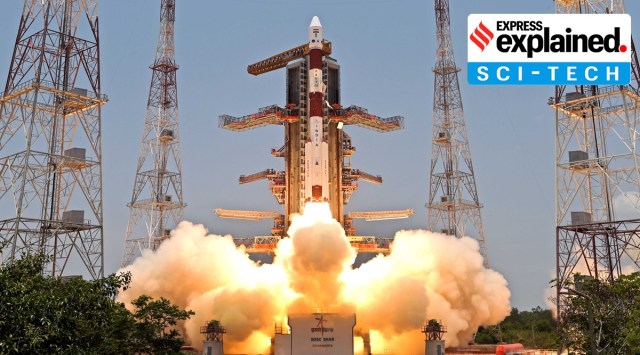Aditya L1 corrects trajectory as it moves closer to Sun: Why, how was this done?
The Aditya L1 is to undertake a 110-day journey through space, one of the longest for an Indian spacecraft since the 2013-2014 Mars mission. Here's why it needed a Trajectory Correction Maneuver.
 The Aditya L1 spacecraft was launched on September 2. (Photo: X/@Isro)
The Aditya L1 spacecraft was launched on September 2. (Photo: X/@Isro) The Indian Space Research Organisation (ISRO) on Sunday (October 8) announced that it had carried out a Trajectory Correction Maneuver (TCM) for its spacecraft Aditya L1, to ensure it reaches its destination at the Sun Earth Lagrangian point 1.
The Aditya L1 is to undertake a 110-day journey through space, one of the longest for an Indian spacecraft since the 2013-2014 Mars mission.
ISRO scientists had indicated that a TCM would be necessary for Aditya L1 soon after the spacecraft began its journey toward the L1 point on September 19, after orbiting the earth for 17 days.
Unlike lunar missions, which take about three weeks to cover the 384,400 km distance to the moon, deep space missions to Mars (distance of 225 million km) and the Lagrangian Point 1 (distance of 1.5 million km) take several months (Mars around 11 months and L1 around four months).
The longer distances require the mission to incorporate trajectory correction plans using orbit determination calculations, to ensure the spacecraft remains on course for its destination.
The Mars Orbiter Mission undertaken by ISRO between November 5, 2013 to September 24, 2014 required three TCMs on November 14, 2013, June 11, 2014 and September 22, 2014.
What are Trajectory Correction Maneuvers?
The Aditya L1 spacecraft is to be injected into an orbit around L1. For this to be achieved, the spacecraft has to travel on a planned trajectory.
After the Trans Lagrangian Point 1 Insertion manoeuvre on September 19, scientists found that there could be trajectory errors that would need correction.
“There is a provision in the mission for this sort of manoeuvre, which is called a trim manoeuvre. This has been part of the mission plans since Chandrayaan 1 (2008). For every orbit-raising manoeuvre, we look at what was the orbit realised. If there is something to be done, we have to do it at the earliest,” said former ISRO scientist M Annadurai, who was closely associated with the Chandrayaan 1 and Mars Orbiter Mission.
In the case of near destinations like the moon, the trajectory corrections have to be done in the span of a week, and for longer destinations, as early as possible.
“The Aditya L1 is making a long journey. If there is a small deviation at the start, then over a month or three months, there could be implications,” the ISRO scientist said.
Smaller corrections involve firing of engines on the spacecraft for shorter durations, which results in conserving of fuel. Bigger corrections need longer firing of the engines.
“We have to assess how much correction is needed. It is a bit like assessing the petrol you want to fill,” Annadurai said.
What is the orbit that Aditya L1 must achieve around the L1 point?
When it reaches the L1 point around the second week of January 2024, Aditya-L1 will carry out a manoeuvre to enable it to orbit around L1, which is a balanced gravitational location between the Earth and the Sun.
The spacecraft will spend its mission life “orbiting around L1 in an irregularly shaped orbit in a plane roughly perpendicular to the line joining the Earth and the Sun,” ISRO said.
The L1 orbit is considered a challenge to acquire and maintain, and a few course corrections by firing of the engines may be needed in the mission life of the spacecraft.
“It is not like an orbit around a planetary body. There are three dimensions to the orbit while other orbits around a planet are two dimensional, either equator or polar. Both the gravities play a role and there is pulling and pushing,” an ISRO scientist said.
When has ISRO performed TCMs in the past?
The manoeuvres are required only in deep space missions.
The Mars Orbiter Mission witnessed three TCMs. The manoeuvres were carried out to ensure that the Mars Orbiters attained the right trajectory to reach a distance of 500 km (plus or minus 60 km) from the Red Planet. If the correction manoeuvres were not carried out, the spacecraft would have reached a distance of 723 km periapsis, ISRO scientists said at the time.






































